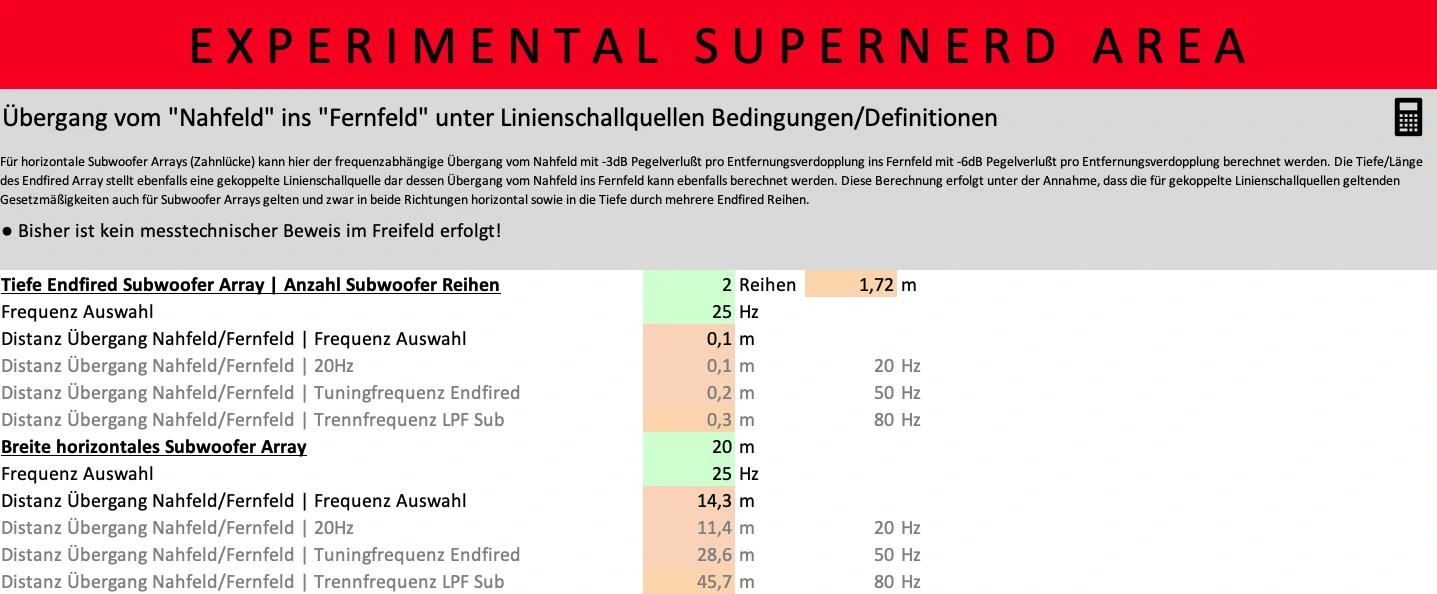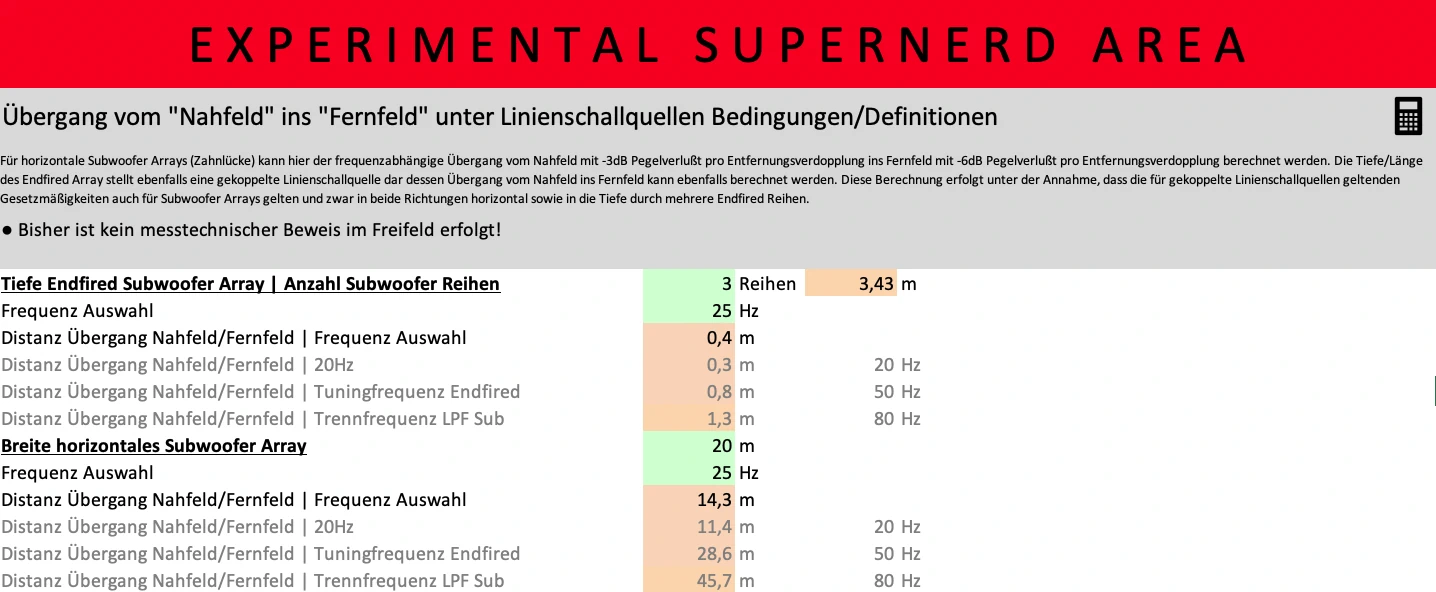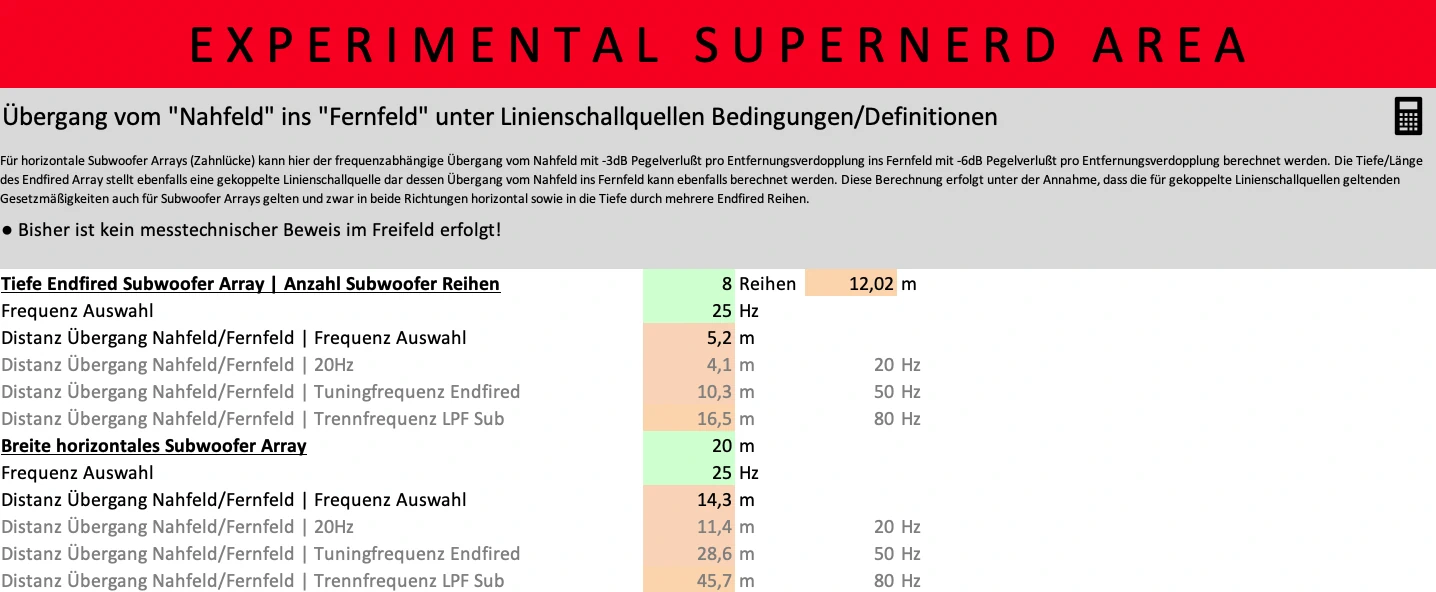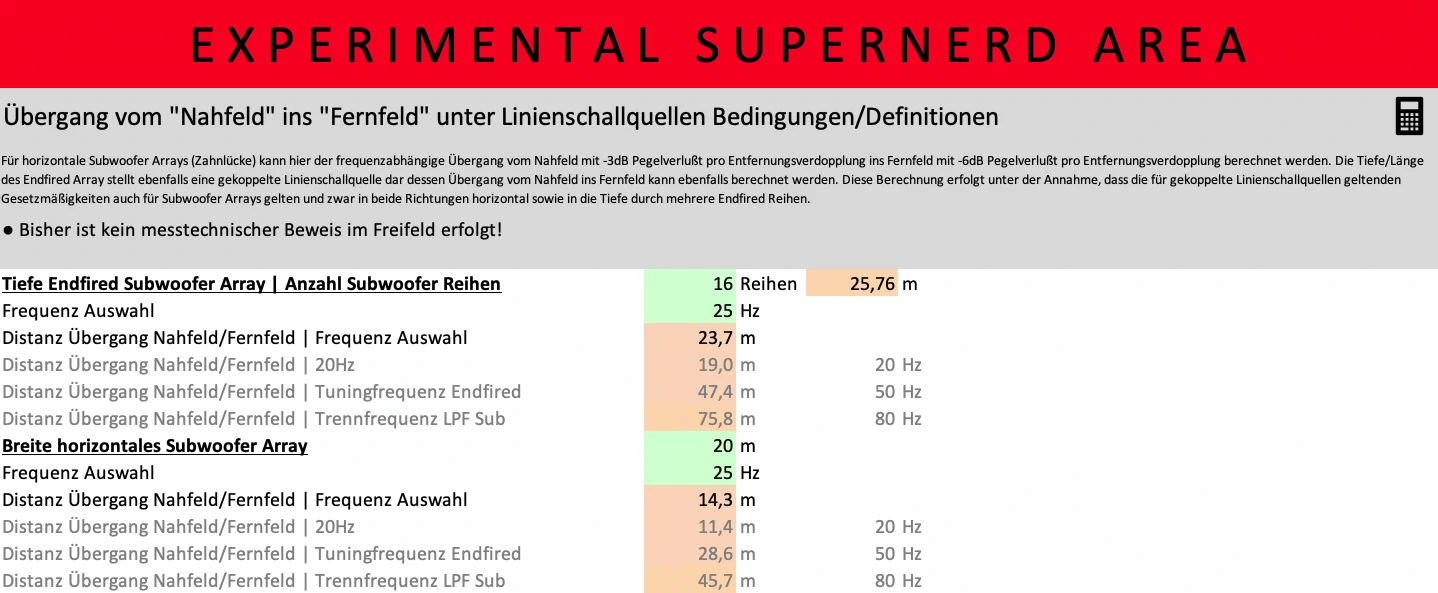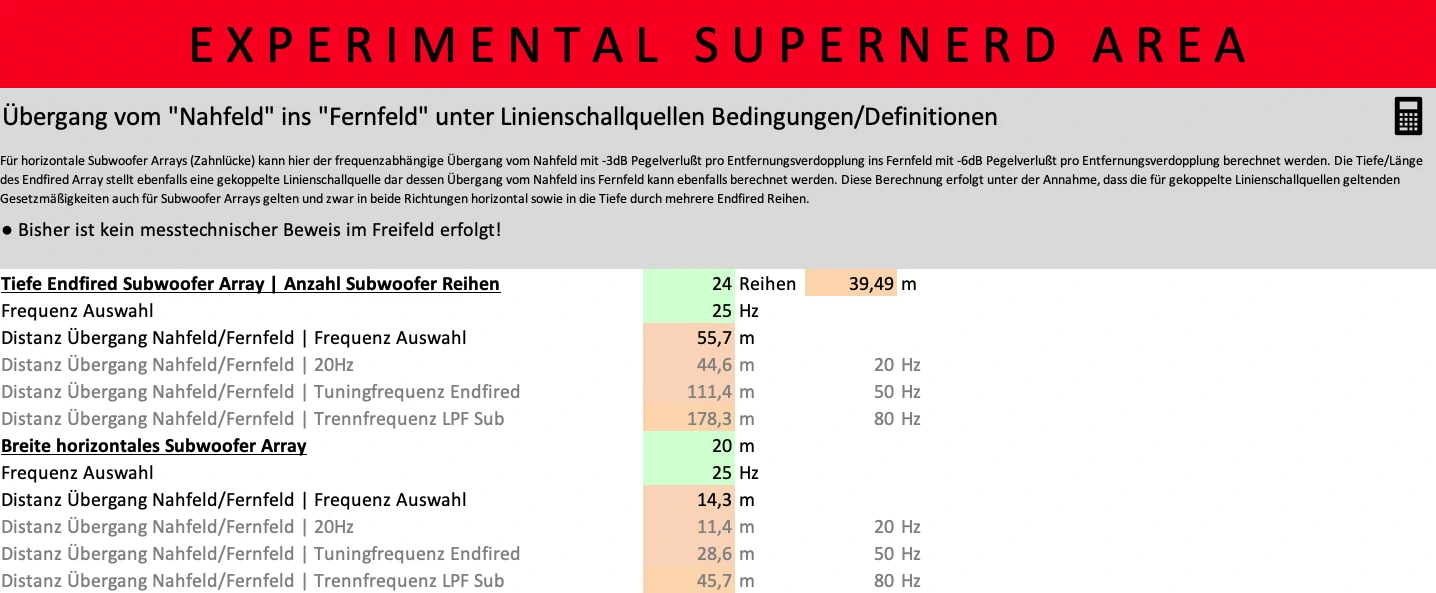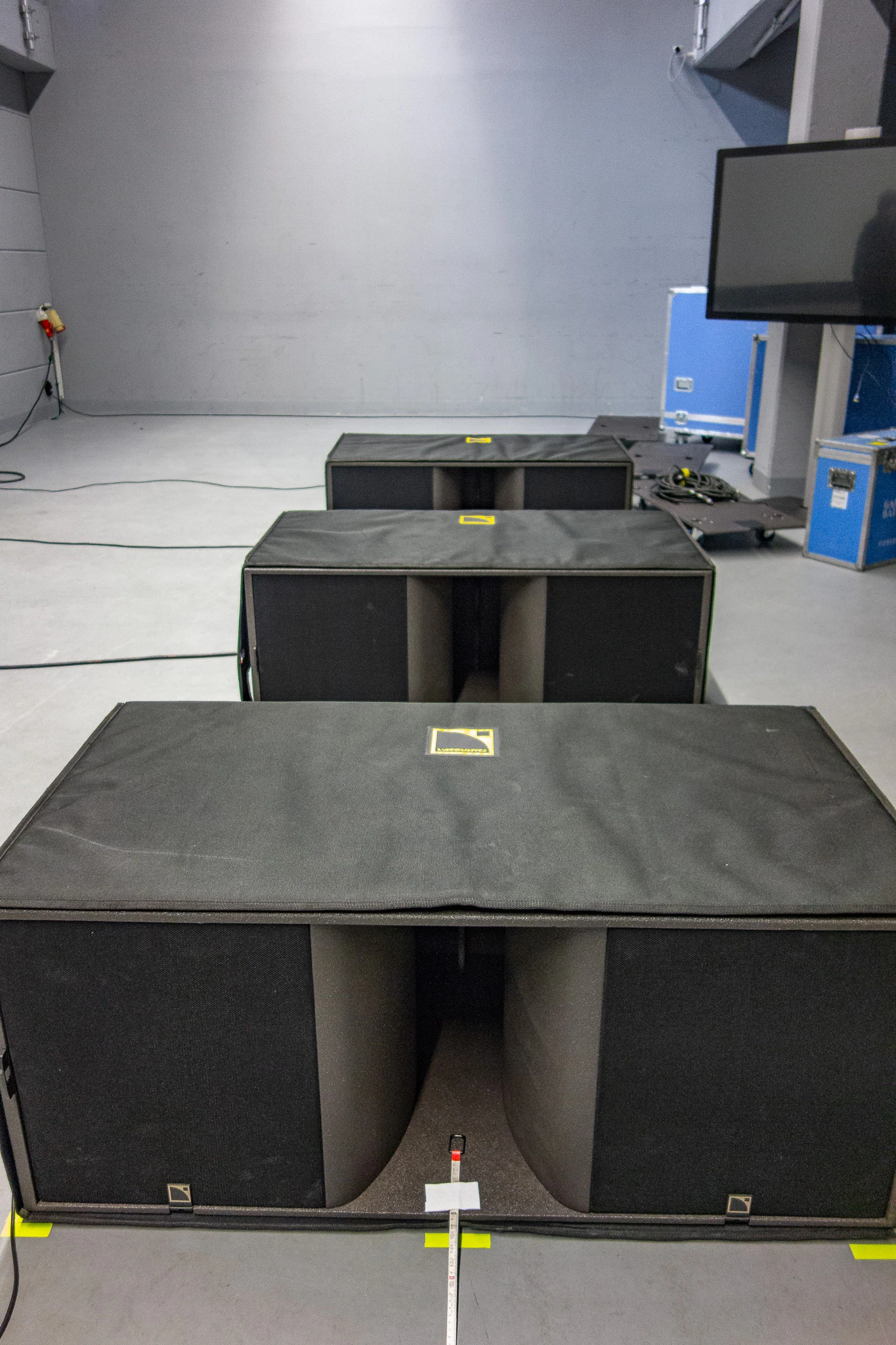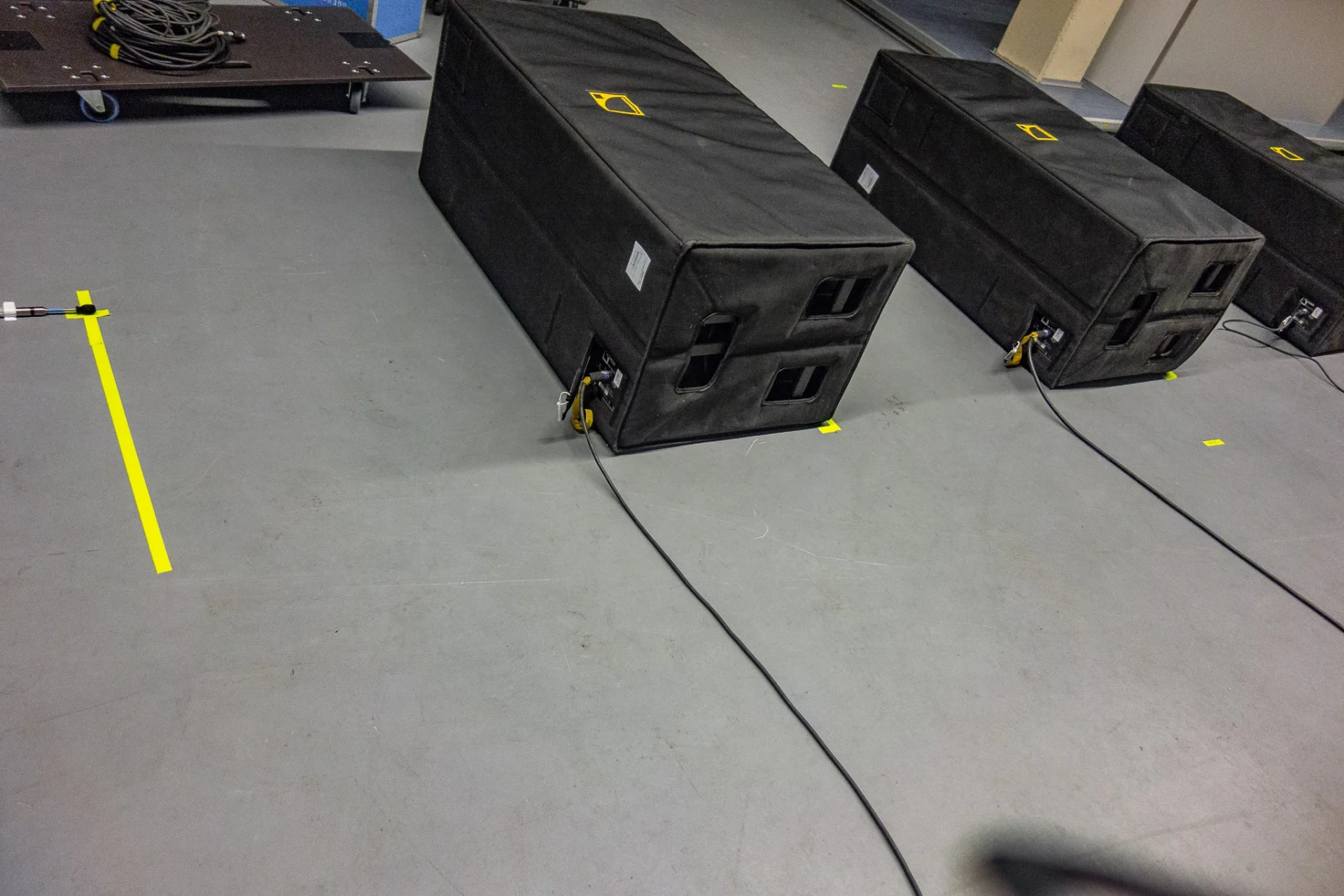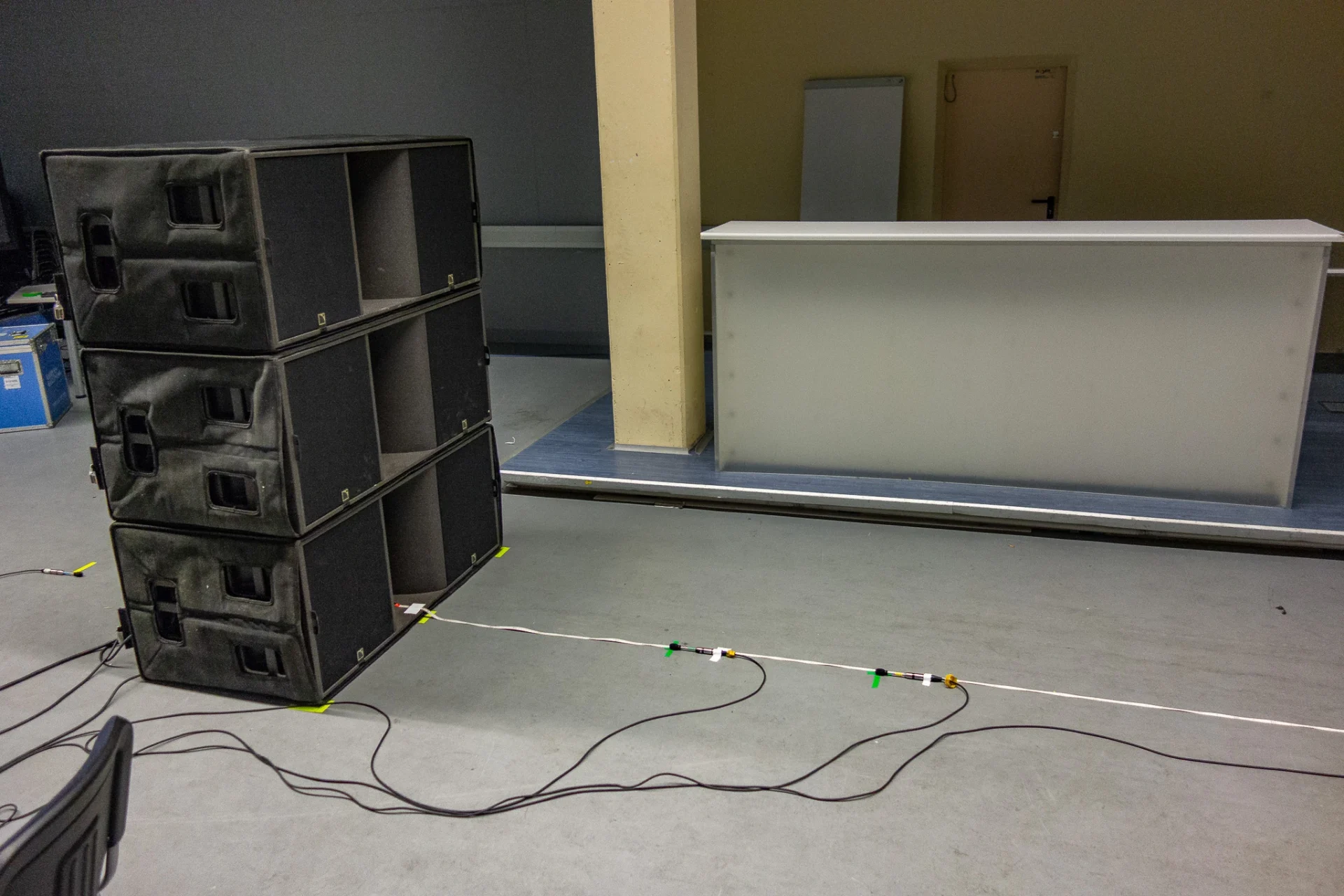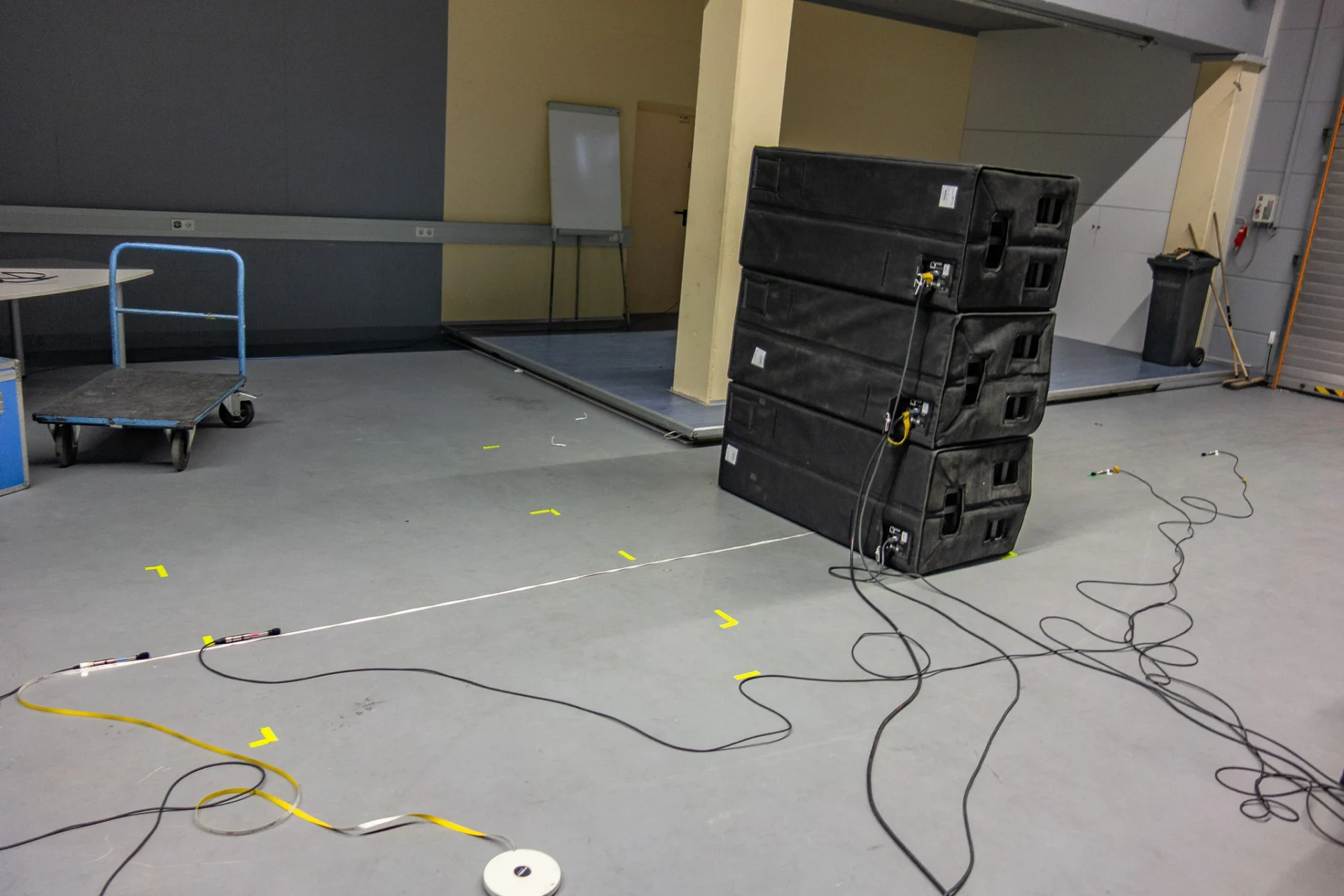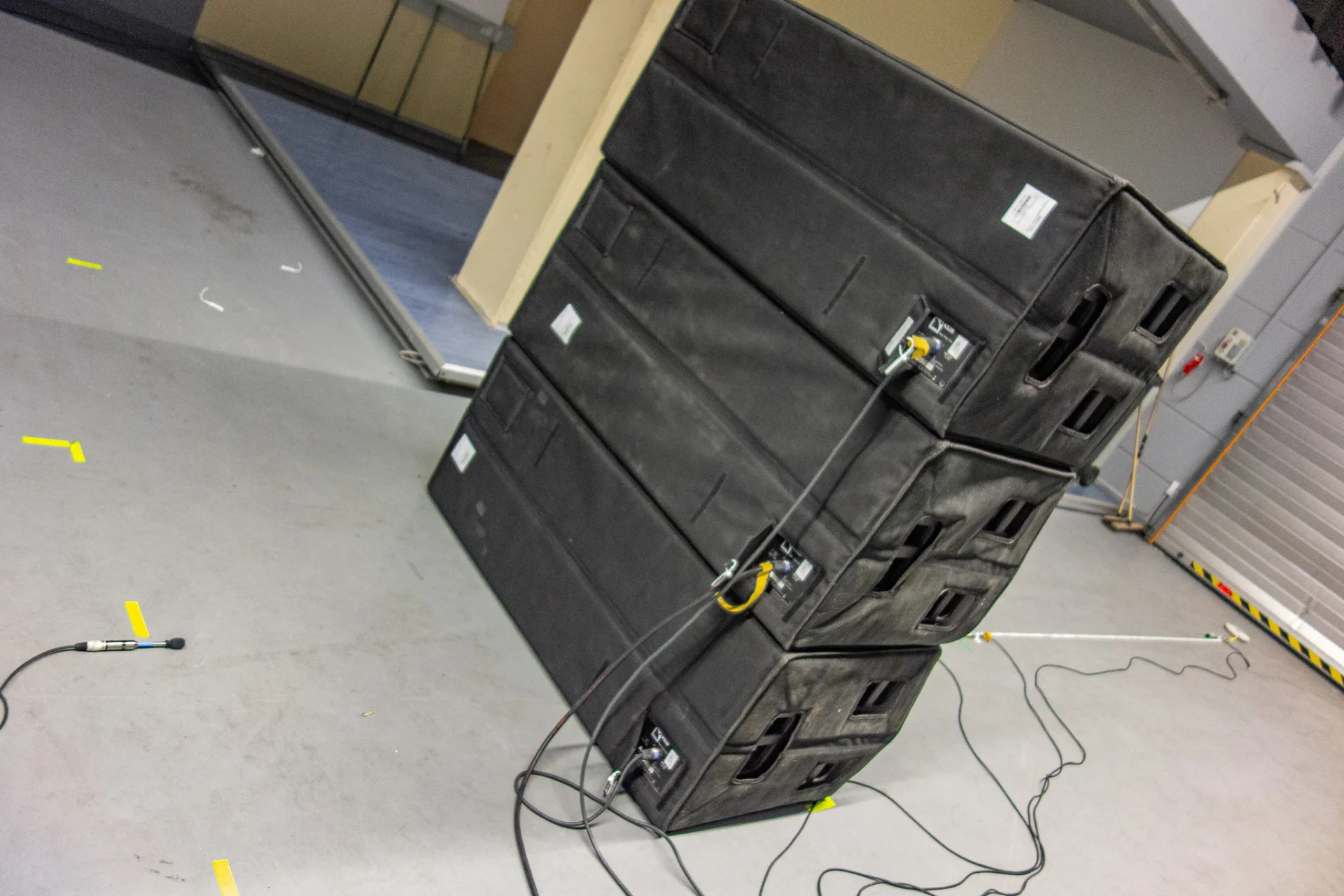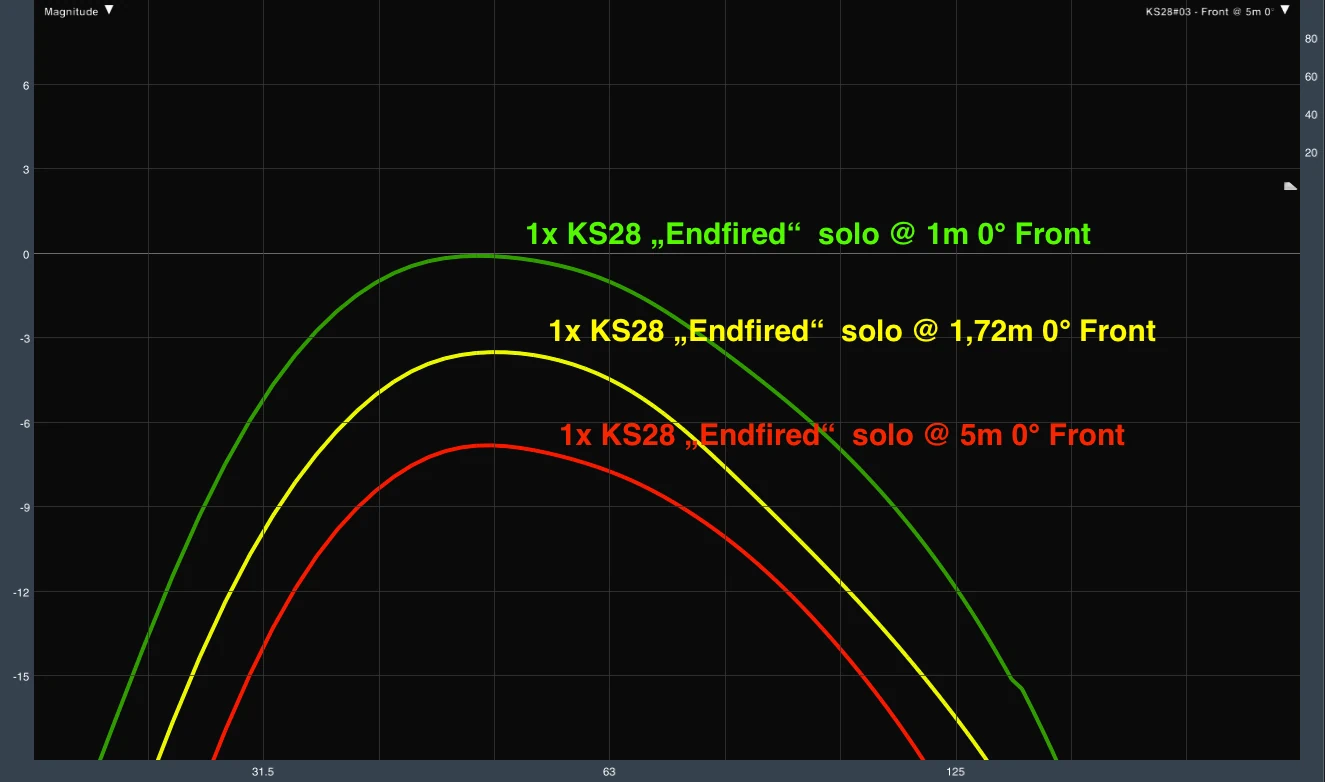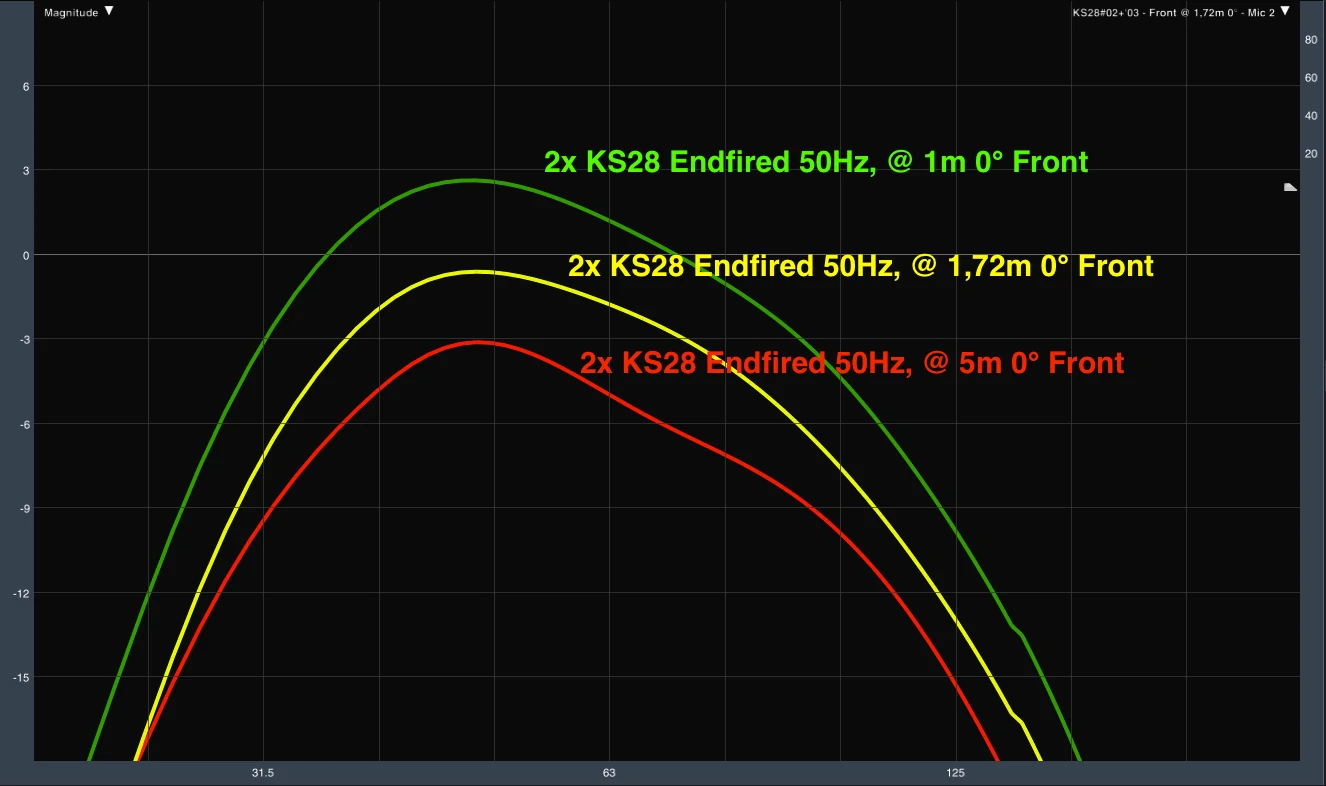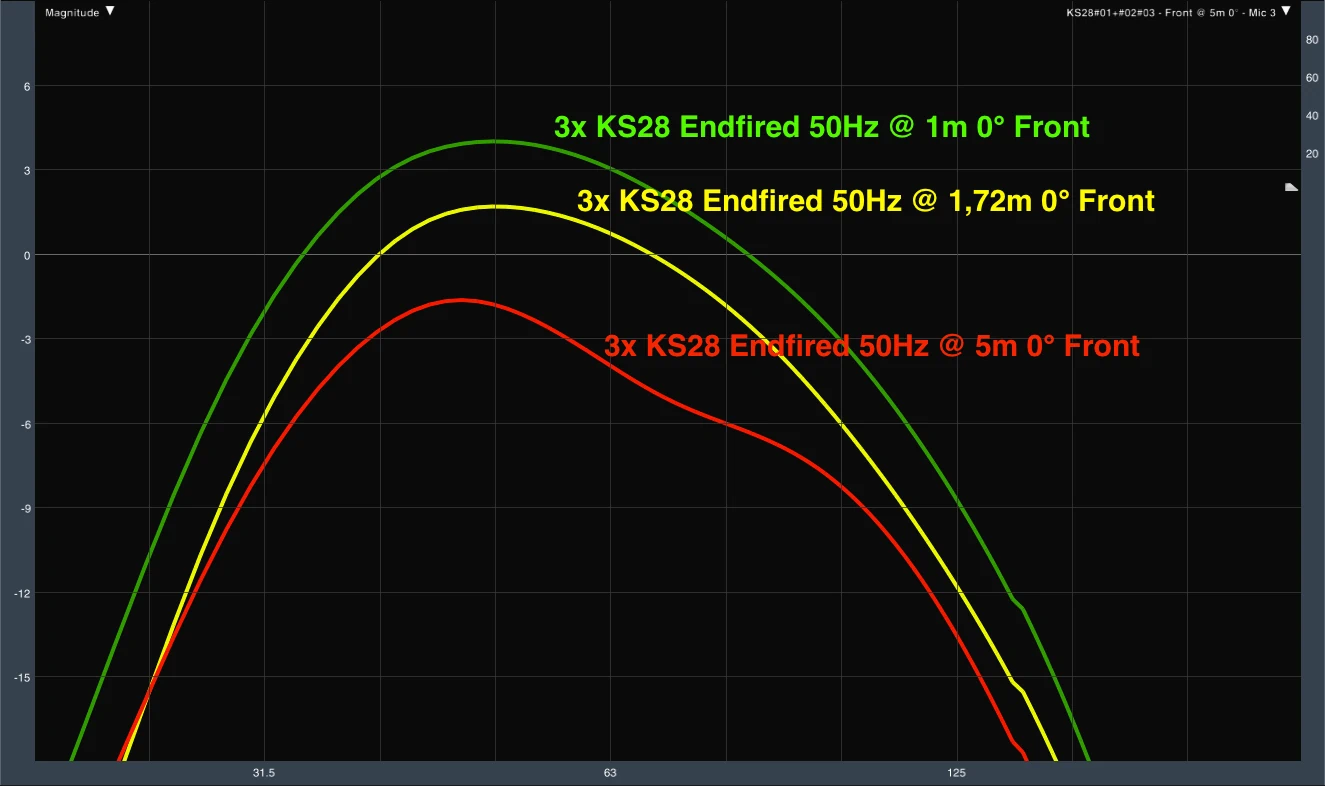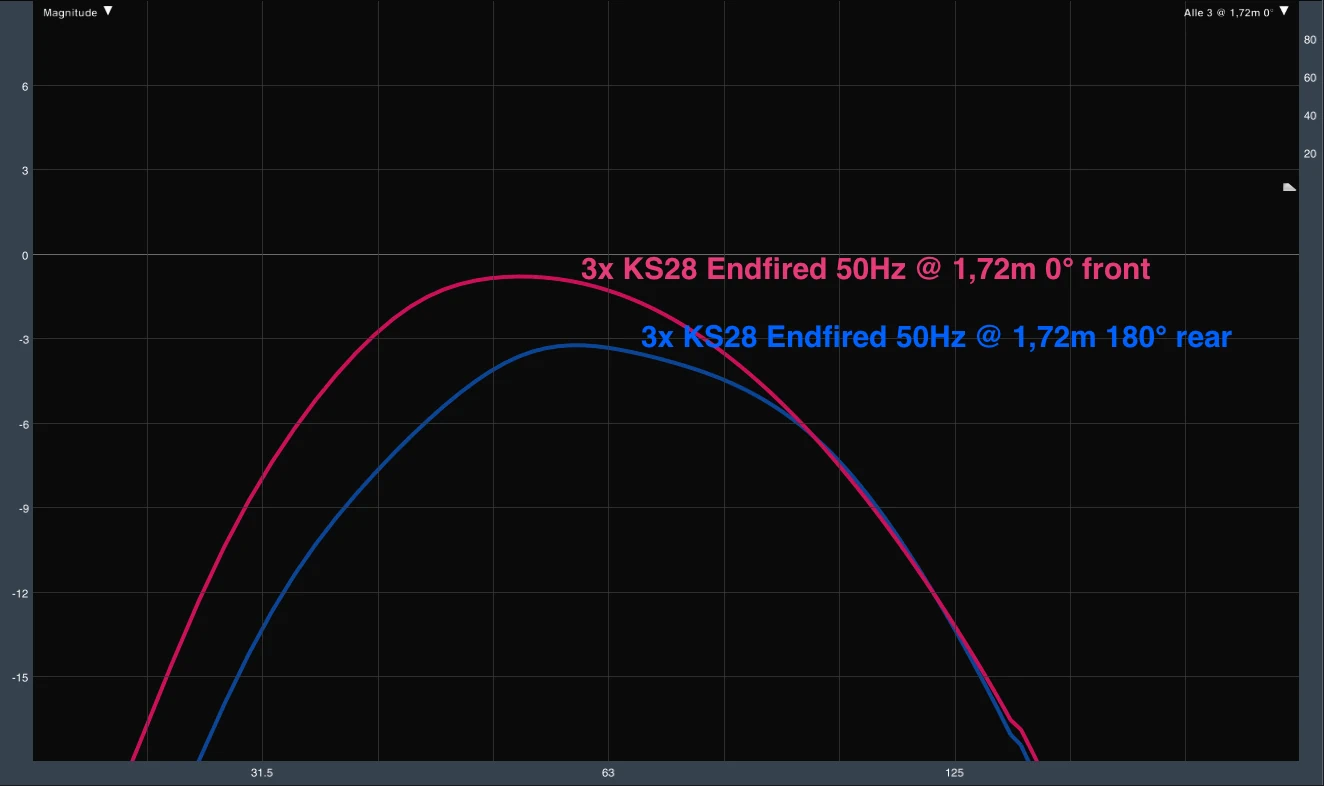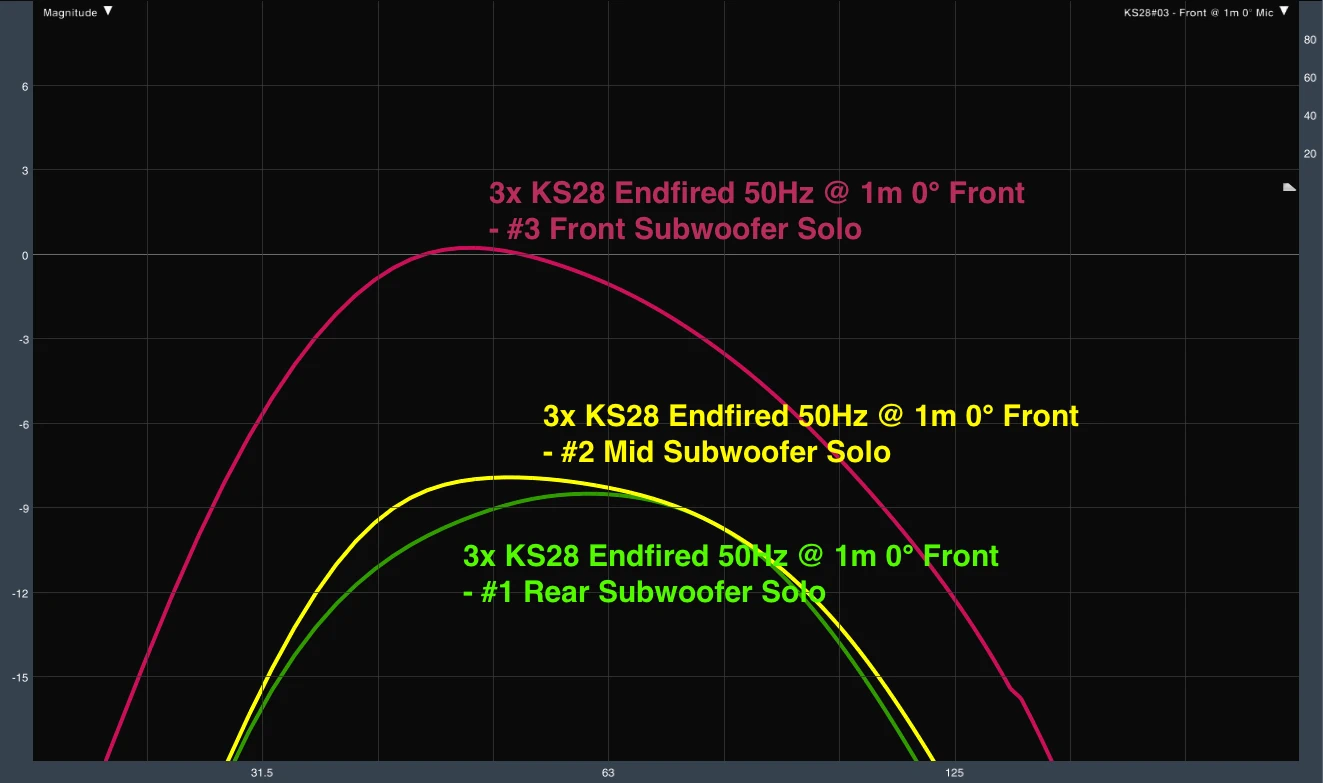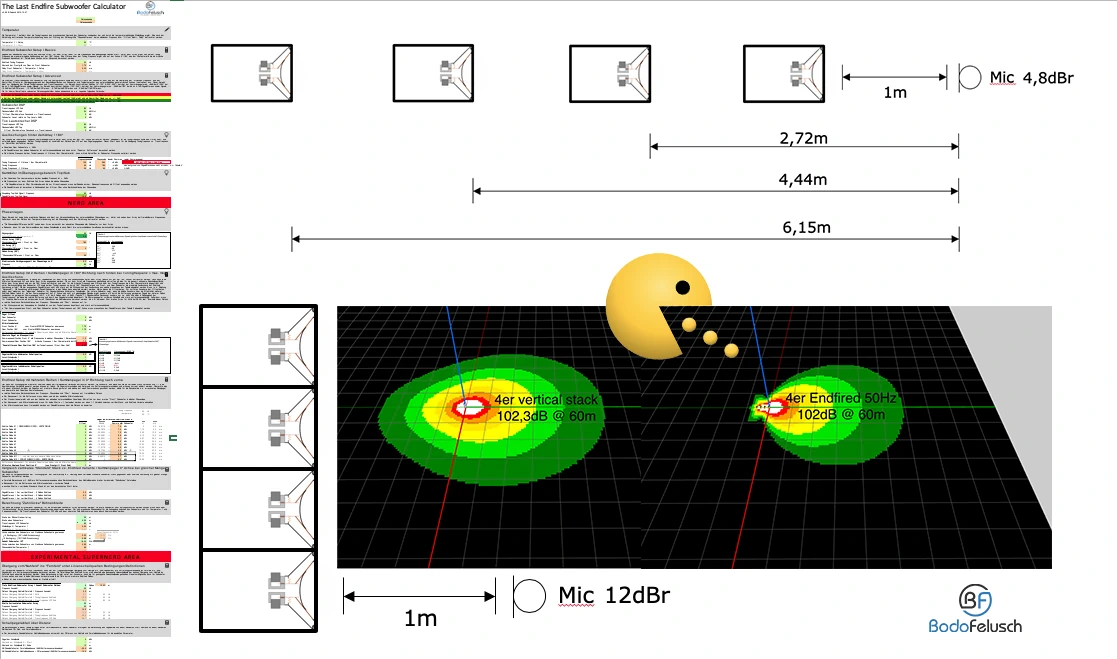
It all started with a stupid question...
I have here a given amount of subwoofers and the task to transport as much sound pressure as possible to the far rear. There are no restrictions on space requirements in front of the stage or additional tasks such as rear damping. In a nutshell: “make loud, shoot far!” and “make whatever you want, you are the boss”.
Which setup do you choose?
Most colleagues who are given this task tend to feel like they are spontaneously selecting an End Fired line-up because they distribute the most energy backwards, according to the justification provided at the push of a button.
If "weakness" immediately comes to your mind, congratulations You are one of the approximately 15% Dissenters and don't need to read any further.
Market overview System Technicians Knowledge
Facebook survey October 2019
I would like to get a reasonably representative overview of what colleagues decide to do if they are given the simple task outlined above: ‘Go loud, shoot far!’ It could be that my personal environment is not very representative. For this purpose, I created a survey on 6 October 2019. Once in the German Facebook group “Further education in event technology” of Ambros Funk with 4112 members who are allegedly interested in further education opportunities in your profession. As well as the international Facebook group “Smaart Users” of Rational Acoustics LLC with 14,699 members, allegedly many system technicians with a measuring device. The question was as follows:
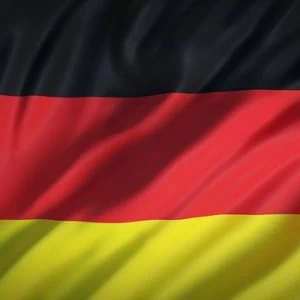
German group
Dear colleagues,
I would like a spontaneous answer to the following theoretical question:
You have 24 identical subwoofers (classic bass reflex 2×18" design) available and no restrictions on space, amping, controlling or similar. The task is to generate the highest possible sound pressure level for a long spectator surface up to the far rear (BumBum). Emission protection requirements or similar do not exist. Which of the installation variants, among others, is the most suitable for this purpose?
I would like to thank you in advance for a spontaneous response without a doctoral thesis in my head!
Please share the question with your favorite colleagues!
greeting
Bodo
Survey result after 6 days on October 12, 2019

International group
Dear colleagues,
I would be glad about a spontaneous answer to the following theoretical question:
You have 24 identical subwoofers (classic bass reflex 2×18 ” design) available and no restrictions regarding space, amping, controlling or similar.
The task is to produce the highest possible sound pressure level for a long audience area as far back as possible (BumBumUtzUtz). Emission protection requirements or similar do not exist. So width is not an issue here so we do not care about arcing, TM- or Vortex Arrays or similar ...just one dimension.
So, if you have a setup in mind, please compare it to a fair alternative design of the given options. (e.g.: amount of subs)
Which of the below mentioned Installation variants is most suitable for this?
I thank you in advance for a spontaneous opinion with no doctoral thesis in mind!
thanks & regards
Bodo
Survey result after 6 days on October 12, 2019
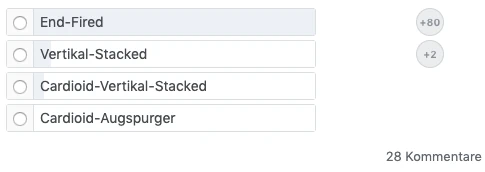

As you can see from the comments, the question seems to have been a bit too complicated or I simply blurred and blurred, which I also do not want to exclude. Furthermore, in both cases, it first needed a person who chose the right answer in order to initiate a follower quota at all. The herd drive towards End Fired myth seems to be propagating in any case. In the meantime, I wonder whether basic knowledge of the level calculation is slowly dying out or whether the specialization in partial works within the sound creators has perhaps reached a critical point, because everyone who works on a mixing console should actually know how a sum level arises from different channel levels.


Here is the sum level of a 50Hz End Fired Setup from 4 rows at the measuring position 1m in front of the front grille of the front subwoofer. All frequencies arrive in the same phase position, but with different levels due to the distance to the measuring micro/emission location.
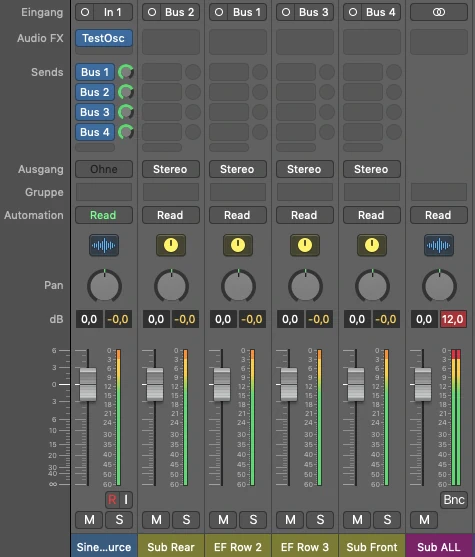
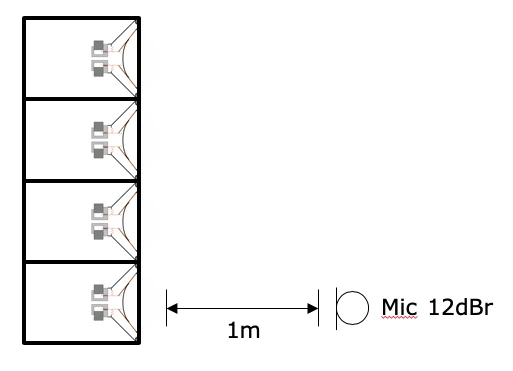
Note: the 0.1dB difference is due to the fact that Logic does not have a second decimal place in the level controls.
So close and yet so far away
Energy conservation rate
The total energy of a closed system cannot change over time.
So, for example, if I take 3 identical subwoofers with one amplifier and one DSP channel each and set them up in different variants, there is no variant that converts more electrical energy into sound and heat than the optimal one.
Optimal sound conversion
What is the "optimal" option? The task discussed here is to convert as much electrical energy as possible into sound pressure. Sound pressure that adds up to the maximum constructively in the sound field! To do so, two conditions must be met at the point of emission:
1. Phase position of all sound sources = 0°
2. Level of all sound sources = 0dBr
Appropriate installation
There is only one subwoofer set-up suitable for this purpose. A monocluster symmetrical in horizontal and vertical direction where all 0° devices correspond to beam angle, 0° direction of installation.
Differentiation from practice
The fact that a 6x6m subwoofer monocluster does not meet other requirements for a sound system concept or stage design is obvious. In this article, requirements for rear damping of a subwoofer setup are excluded, of course, the End Fired variant is a suitable variant for this purpose, as it represents a compromise between a classic gradient cardioid variant and a broadside or classic vertical stack tooth gaps setup. The classic gradient cardioid variant has the advantage of enabling the best backward damping at the disadvantage in the sound field to distort the impulse response and an uneven horizontal cover over the frequency response. The End Fired variant in turn reverses these properties and has an uneven rear attenuation with phase-like addition in the sound field.
Where's the problem?
The End Fired setup thus offers the first, above all, prerequisite for phase-like addition of all frequencies in the front sound field. However, the second condition that all single sound sources with the same relative level arrive at the emission site/measuring microphone/audit site is not met.
Efficiency reloaded
1+1 = 3

What is the reason for the poor overestimation of End Fired constellations?
Of course, such a system has a direct effect. But what is a direct effect at all?
Every directing effect is basically nothing else than taking advantage of targeted destructive addition.
i.e. in our case the field size sound pressure of two sound sources cancel out completely or partially against each other.
As a result, areas in the sound field are undersupplied.
However, the assumption that magical energy miracles occur elsewhere in the sound field is wrong.
The perfect addition of sound pressure by round radiating subwoofers is always 0dBr at 0°.
Each subwoofer generates 0dBr sound pressure.
Better than with 0° phase shift you can not add them.
The only way to increase the nominal sound pressure is to use the spatial limitation of the sound propagation, e.g.: Floor, wall, corner, or horn. Here, the sound power is distributed to a smaller volume and sound pressure is known to be the result of sound power. That is not the case here. Nor have I found a source that describes setting up End Fired Subwoofer Arrays and mentions that you can use it to distribute more energy into the depths than with alternative arrays of the same amount of subwoofers. Only the indicative effect is described. The only thing that is often misdescribed is the sum level.
Mistakes in the textbook
Often you read, the first row End Fired brings +6dB and every further +3dB. Alternatively, one finds the slightly more correct variant that the sum levels correspond to the coherent addition of the quantity ratios. Here are a few calculations.
First row

Second row

Third row

Fourth row

Five rows

How wrong can it be?
If you were able to follow me up to this point, it should be clear that these calculations apply to mono clusters where the two basic conditions apply the same phase position and the same relative level. However, not for End Fired installations where the sound sources have different distances and thus levels to a measuring / listening location. For this purpose, a further calculation for a variant with 50Hz tuning frequency.
12 Rows End Fired @ 50Hz

Everything is Relative
Who is 1m in front of the subwoofers? With increasing distance, the level differences of the individual subwoofers are relativized! For this purpose, let's compare the level differences of End Fired arrays with the same amount of subwoofers as vertical stack mono clusters at different distances.
Level difference at 1m distance from the front grill of the 1. series.

Level difference at 2m distance

Level difference at 4m distance

Level difference at 8m distance

Level difference at 16m distance

Level difference at 32m distance

Level difference at 64m distance

Level difference at 128m distance

Who wins?
As you can see, the classic stack variant always wins, although the absolute profit at some point equalizes with the distance. However, the End Fired variant is by no means able to shoot energy into the depths any more effectively, the only thing it can do is play the Pacman game backwards.
And what about the line effect?
An End Fired installation acts like a coupled line sound source for the near-field conditions apply as far as level loss over distance is concerned. In addition, you like to build horizontal arrays, which also causes a line coupling. So let's briefly calculate the transition from the near field to the far field with different amounts of End Fire rows and 20m width of a horizontal array.
Line effect at 2, 3, 4, 8, 16, 24 rows and 20m width
Verification with Prediction Software
Since I tended to be rather bad at math, it is recommended to check your own calculation against software that smarter people have programmed.
At this point a heartfelt thanks to my math teacher Mr. Ebeling, who actually helped me to my first 1 in math at the Fachabi through his inspiring way and without whom I could probably not carry out such simple calculations as this one today.
L-Acoustics Soundvision

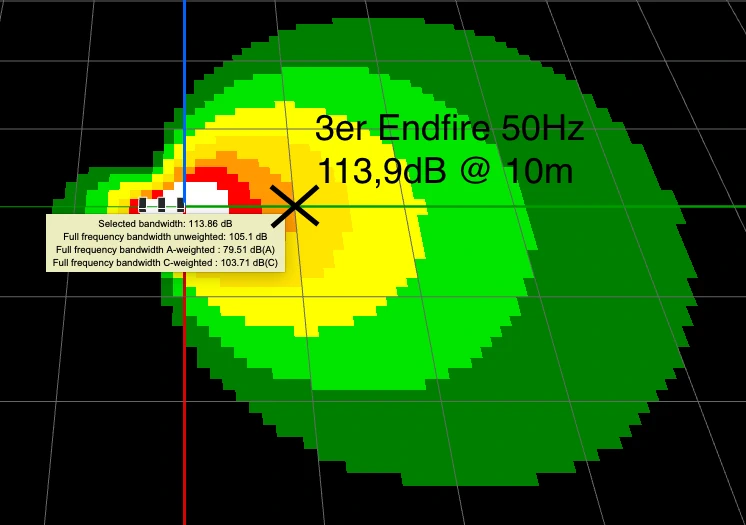
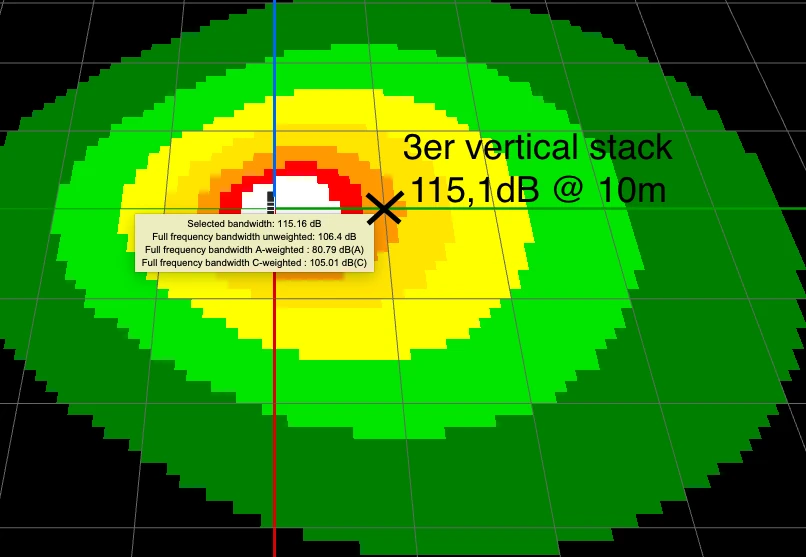
Practical test
If the theory is correct, you have to be able to prove it in practice!
Note: Since it was raining, the evidence had to be done in the hall. The deviations could be justified with room modes and diffuse sound. A free-field attempt seems superfluous to me because I could prove all the claims.
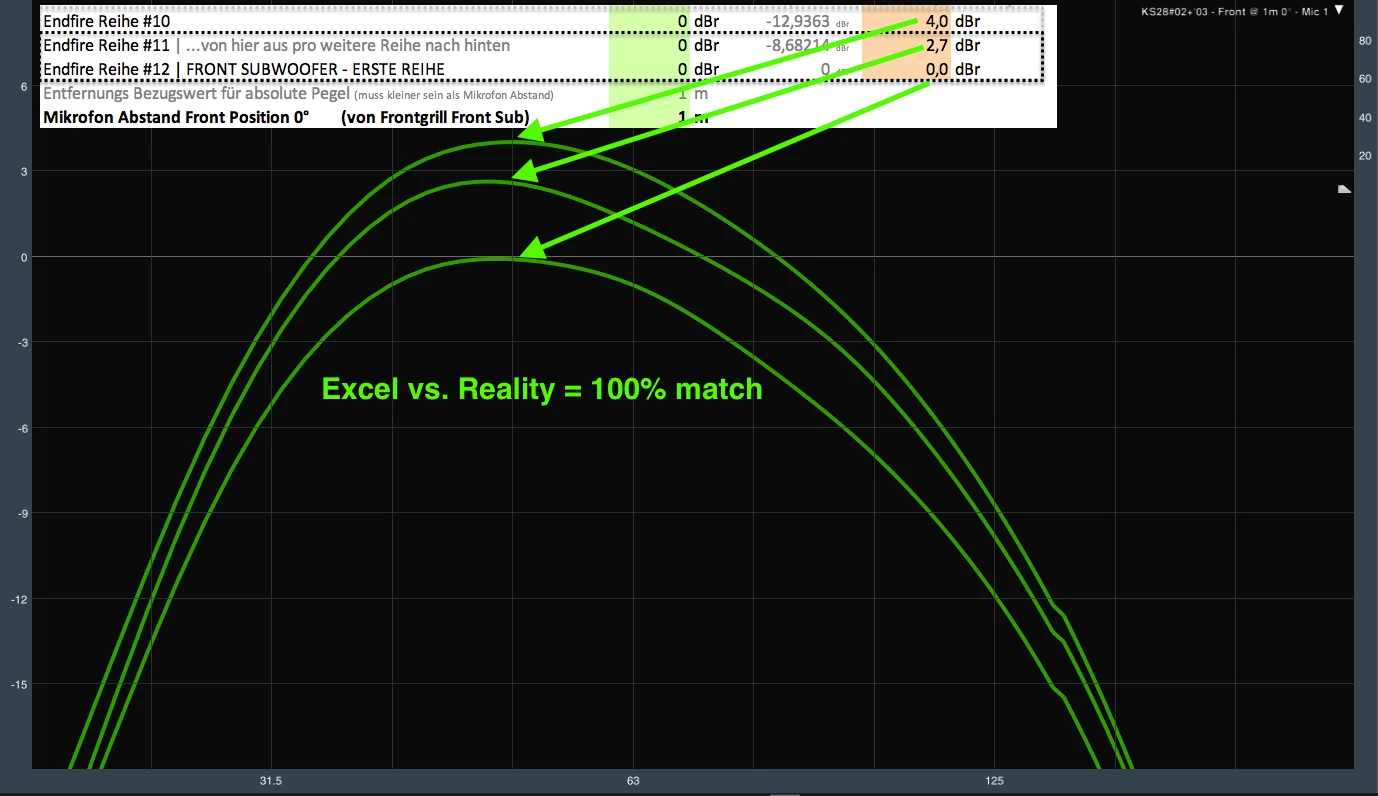
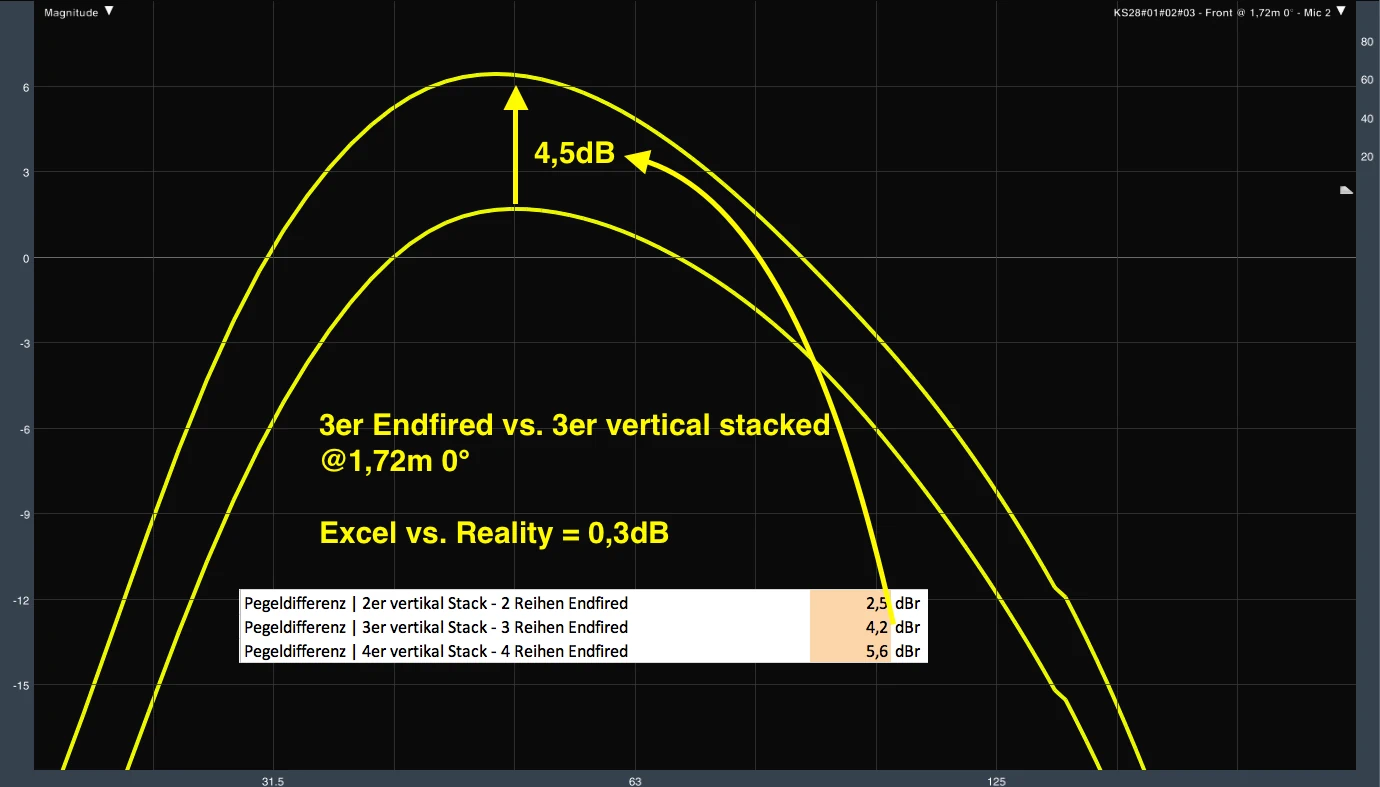
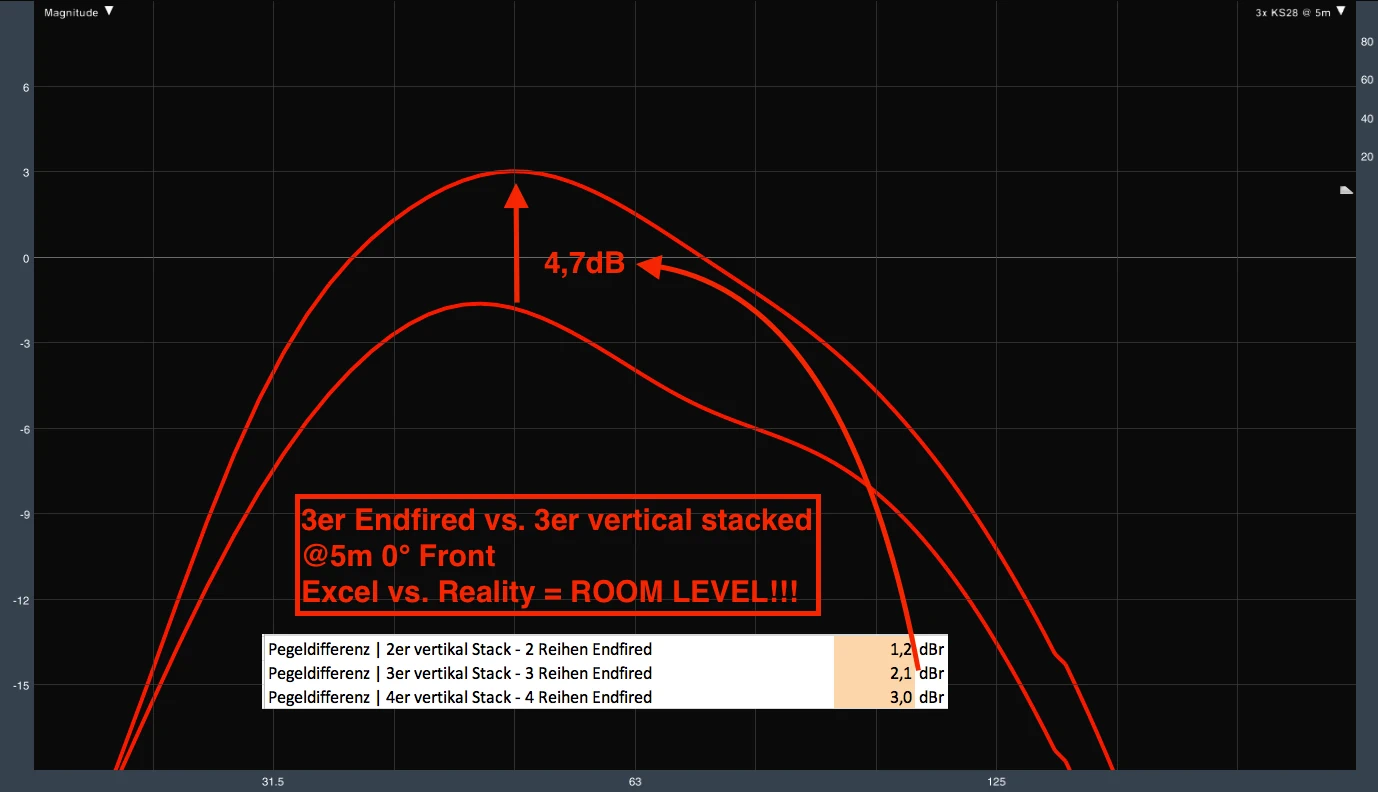
conclusion
End Fired Subwoofer Arrays cannot conjure up sound pressure!
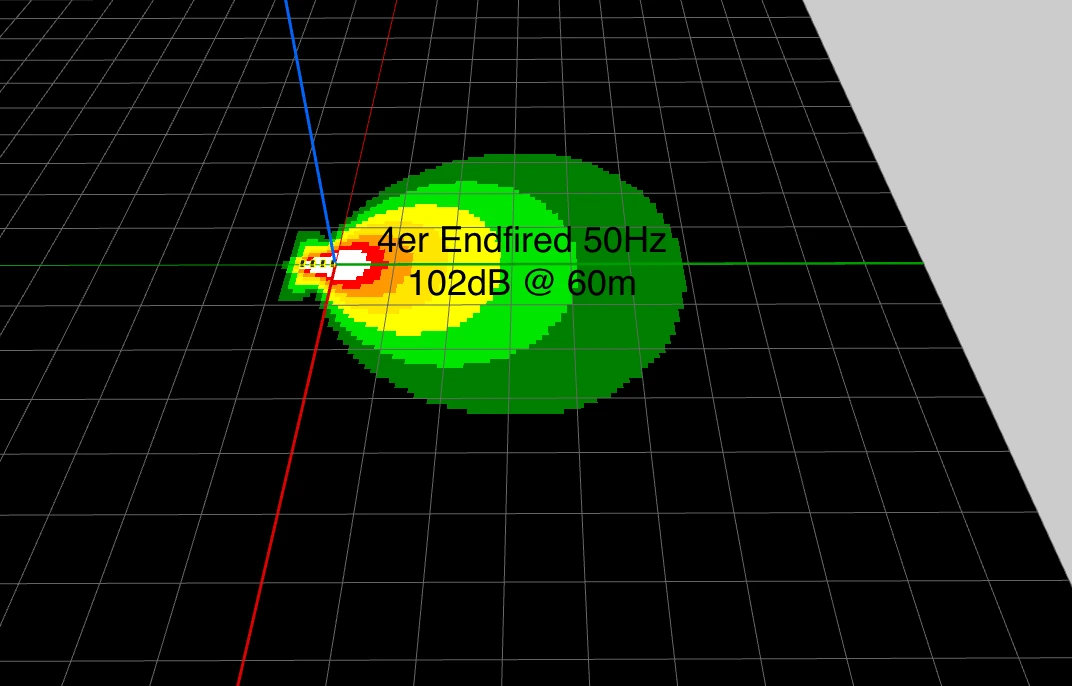


FREE DOWNLOAD
You can download “The Last Endfire Subwoofer Calculator” here.
Features:
- Calculation of the sound level drop over a freely selectable distance from start to finish for near field and far field conditions
- Calculation of the distance for a tuning frequency
- Calculation of the delay time for 2 temperatures
- Calculation of comb filter extinction at a selected input frequency for freely selectable crossover frequencies of top and sub loudspeakers.
- Calculation of the extinction behind the Endfire Array at tuning frequency +/- One octave
- Calculation of the phase positions for a selectable input frequency behind, forward and next to the array as well as the phase angle difference with a temperature change
- Calculation of the electronic delay time for a selectable frequency and phase position
- Calculation of the level difference behind the array for a two-row endfired setup with selectable microphone spacing
- Calculation of the level ratio of coherent sound sources
- Calculation of the level ratio of incoherent sound sources
- Calculation of sum levels and delay times for up to 12 rows Endfired
- Calculation of the level difference Endfired vs. Stacked for 2, 3, 4 speakers at selectable distance
- Calculation of the tooth gap for selectable quantities of subwoofer and stage width, as well as resulting phase angles
- Calculation of the transition from "near field" to "far field" under line sound sources Conditions/definitions

